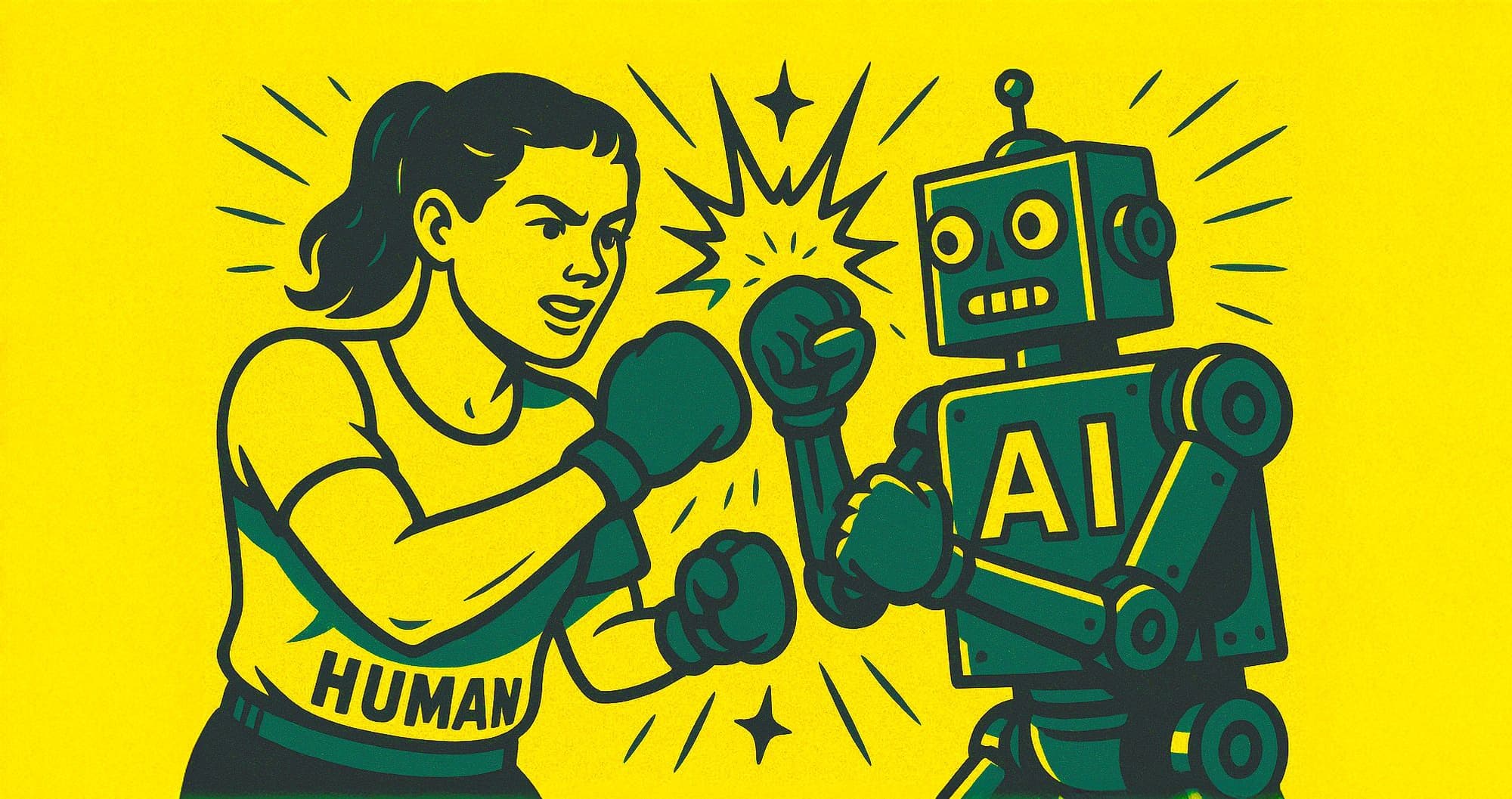
Are you an AI resister or insister?
The Fora Institute of Work advisory board is home to obvious enthusiasts like Tracy Hawkins, VP of Real Estate and Workplace at OpenAI, and sceptics like Simon Allford, co-founder and director of Allford Hall Monaghan Morris. Read the article to see what our expert advisory board think of AI.
"AI is either the answer to every workplace problem, a soulless job destroying monster, or something in between. So what? Currently, the success or failure of AI is anecdotal. The stats can tell conflicting stories."
JULY 2025
The big four professional services companies Deloitte, EY, KPMG and PwC will take on hundreds fewer school leavers and university graduates, using AI tools to do the work of juniors.
But a survey by Gartner in June found that 50% of business executives with plans to reduce their customer service workforce expected to reverse that decision. Klarna CEO Sebastian Siemiatkowski replaced 700 customer service staff with AI chatbots in 2024, then reversed his decision this May, suggesting the move led to “lower quality” customer service.
It's hard to disentangle what's going on in the economy from what's going on in tech use, because we're still relatively early in AI adoption, so for the next couple of newsletters The Fora Institute of Work's advisory board is going to be exploring our panel's view of this technology in the workplace.
We're home to obvious enthusiasts like Tracy Hawkins, VP of Real Estate and Workplace at Open AI, and sceptics like Simon Allford, co-founder and director of Allford Hall Monaghan Morris.
AI is more efficient: “If you benchmark us against the size of other finance teams for the revenue that we do, we're about 19% their size,” says Hawkins. “That's because we use AI to help us go faster, to save time. It's everything from an agent automated Slack bot dealing with an employee reporting a spill in a hallway, to one of our facilities guys uploading all of his leases and engineering manuals.”
AI is less efficient: “We do complicated three dimensional models of buildings that have millions of bits of data and AI can't replicate that, yet. For now, it can make something that looks like it,” says Allford. The better it gets, the more useful it will be, he believes, but the more it might be stealing our knowledge. He worries that the shortcuts are either going to be included, creating danger, or have to be weeded out, creating work. “Based on experience, that's going to add layers of complexity to our operation, pages of more regulation, and an element of risk. I see my children using AI, and their brains being dumbed down, as they no longer develop critical thought.”
A concern that contrasts with the optimism of The Fora Institute of Work’s Andy Haldane. Who, in a Financial Times article titled ‘AI could consign educational traumas to history’, argued that “digital technologies, and artificial intelligence in particular, are freeing us from our 19th-century learning constraints,” allowing us to move away from traditional “chalk and talk” teaching and examination-based assessment methods.
Will AI drive growth? According to research from McKinsey, only 12% of US C-suite respondents said they had revenue-generating use cases for generative AI. Tech writer and AI sceptic Ed Zitron argues that companies are not creating perfect tools, they’re creating average software “that becomes yet another vague business automation tool for growth, and another tool that locks you into their greater ecosystem.”
Human and machine not human or machine: David Farrell, a former university professor, created the British government's Foreign Office chatbot using a well known generative AI. As generative AI works on probabilities, a mistake unnoticed can be catastrophic.
The questions he asked the AI mimicked the kind of question British nationals ask the Foreign Office - “We land on 1st January and have a return flight from the Philippines on 1st Feb. Since we are only overstaying our 30-day visa by 12 hours, do we need to pay?”
But the bot made mistakes and began hallucinating - when a LLM finds non-existent patterns and creates nonsensical outcomes, in this case misquoting both the currency and sum of visa related fines.
Farrell found this fallibility so risky that he modified the AI to respond to queries using a controlled set of answers pre-written for it by the Foreign Office. Humans ask the questions. The AI simply chooses the answers already written by humans. Perhaps that's the future for AI in the workplace... a sort of algorithmic farm animal tended to by herders to make sure it doesn't return to the wild.
The Fora Institute of Work explores the big questions shaping how we work. From the rise of AI to the return of in-person collaboration, our monthly newsletter explores the trends, tensions, and innovations transforming the modern workplace.